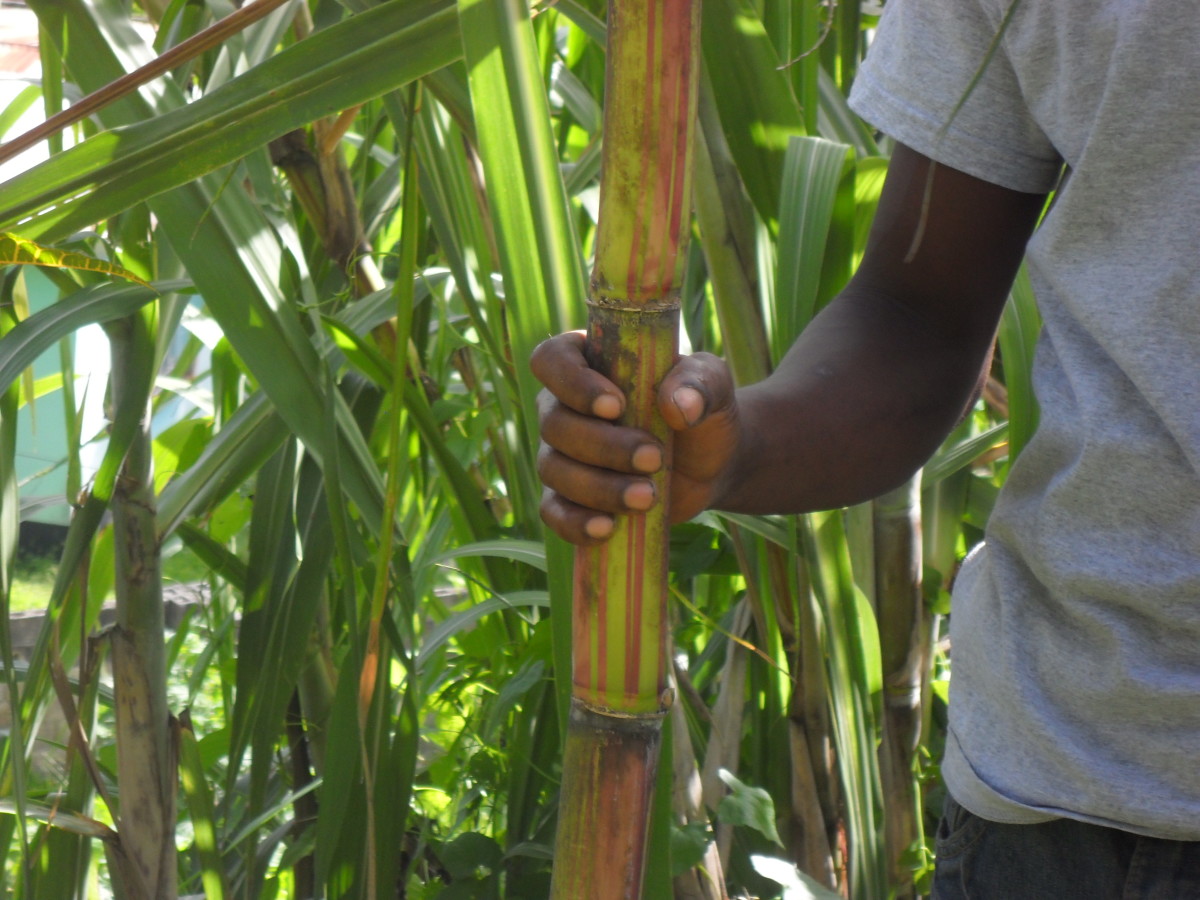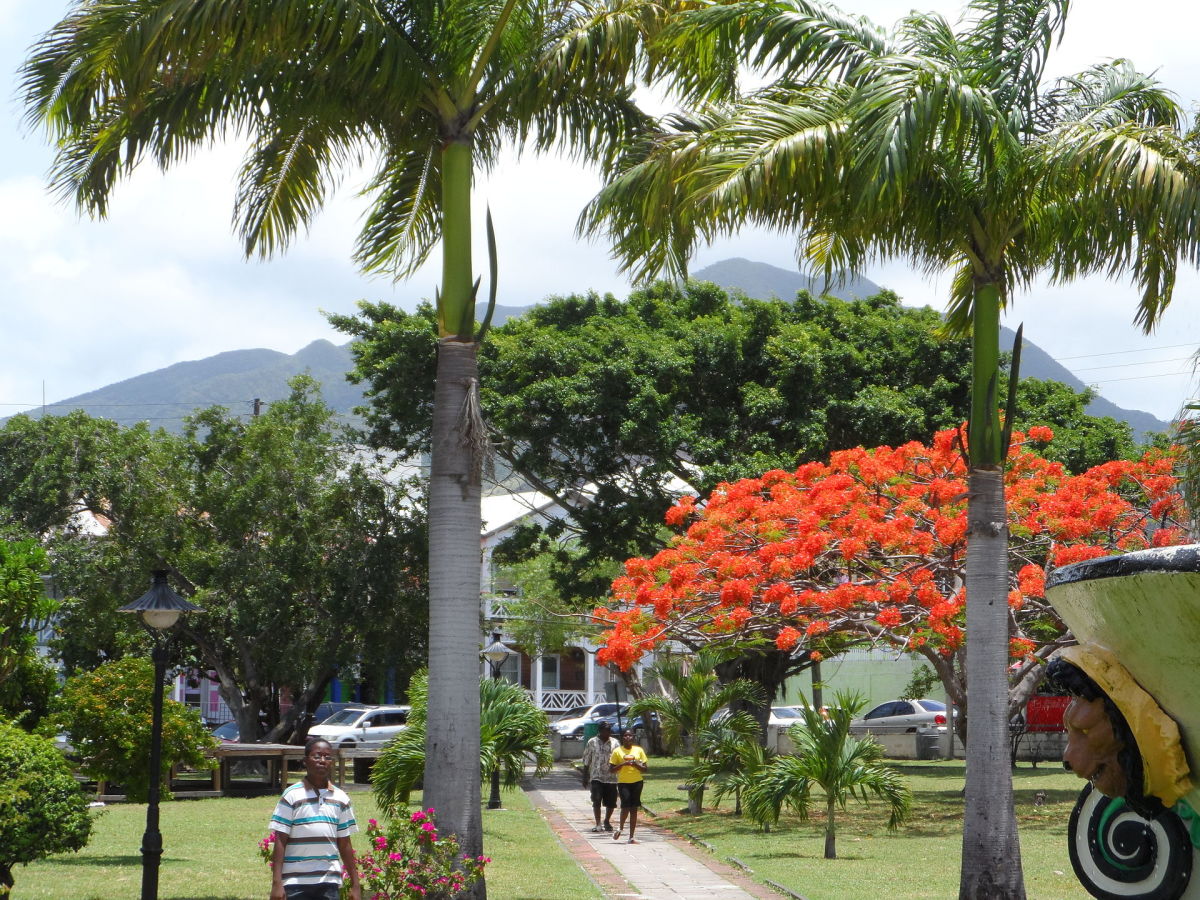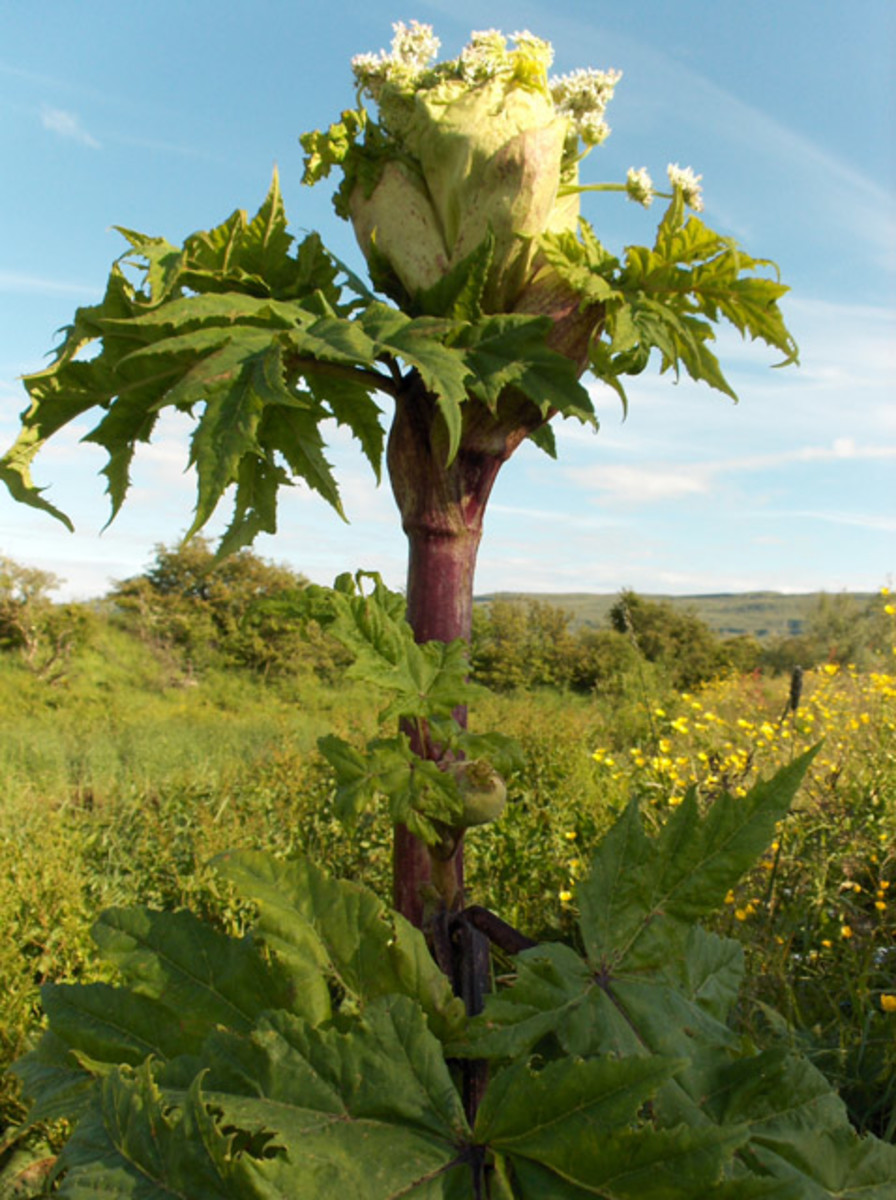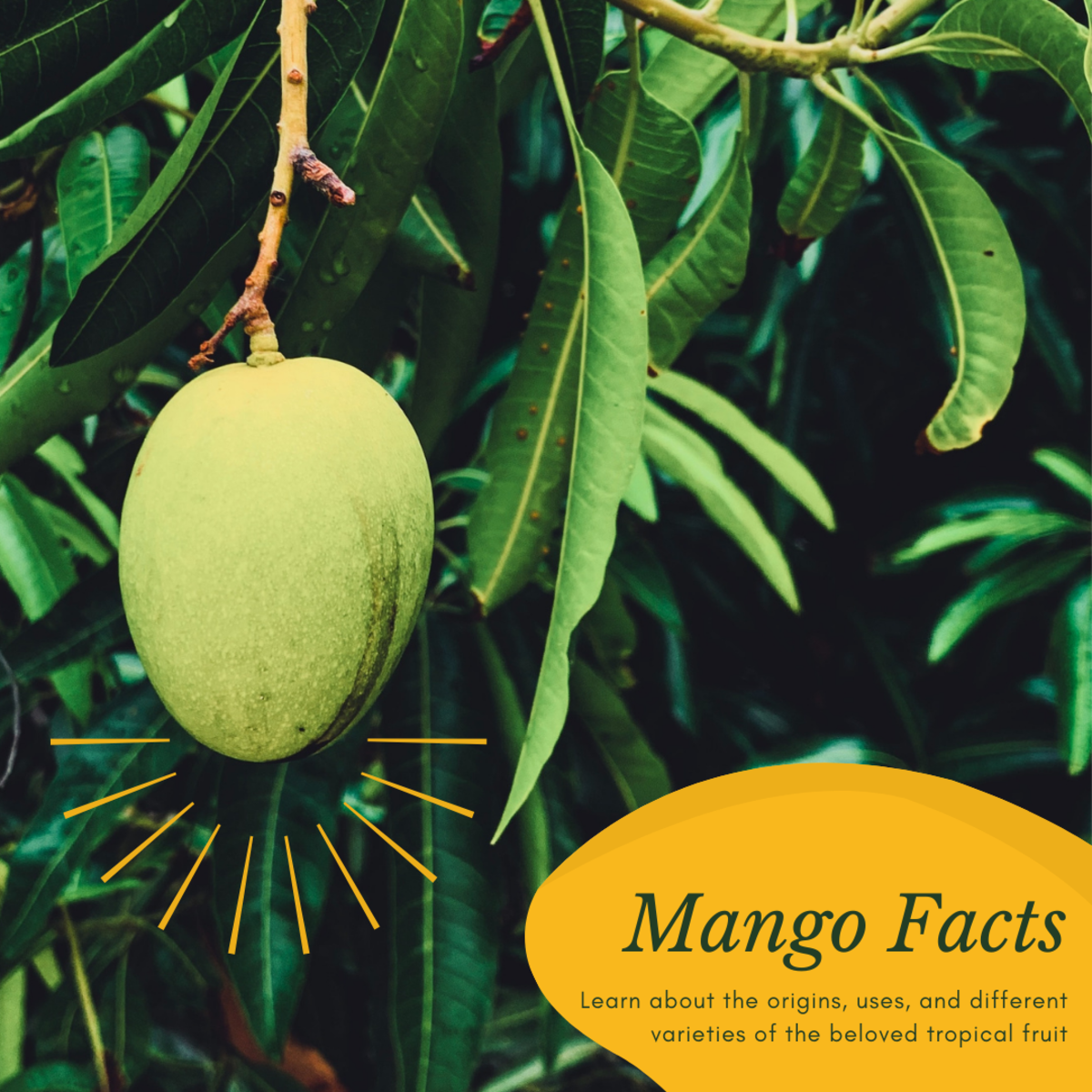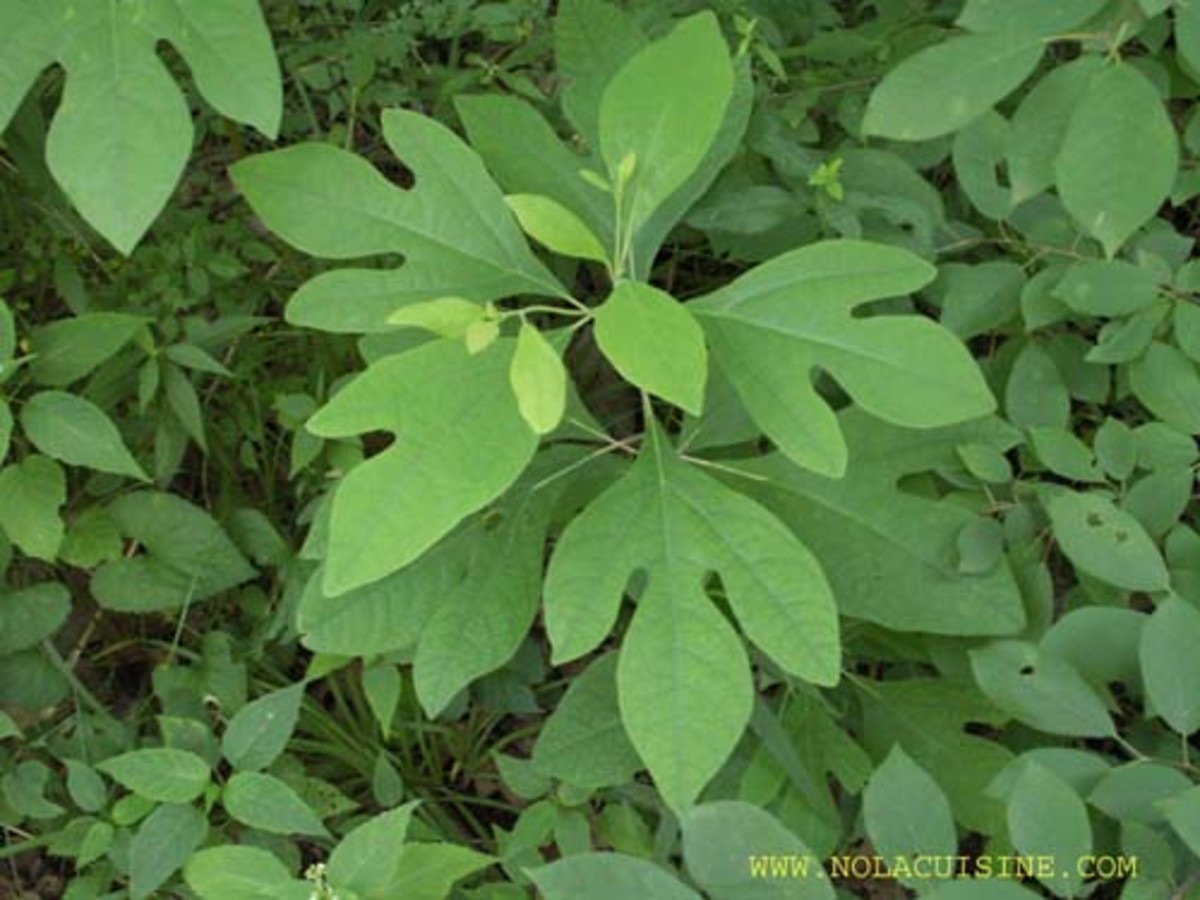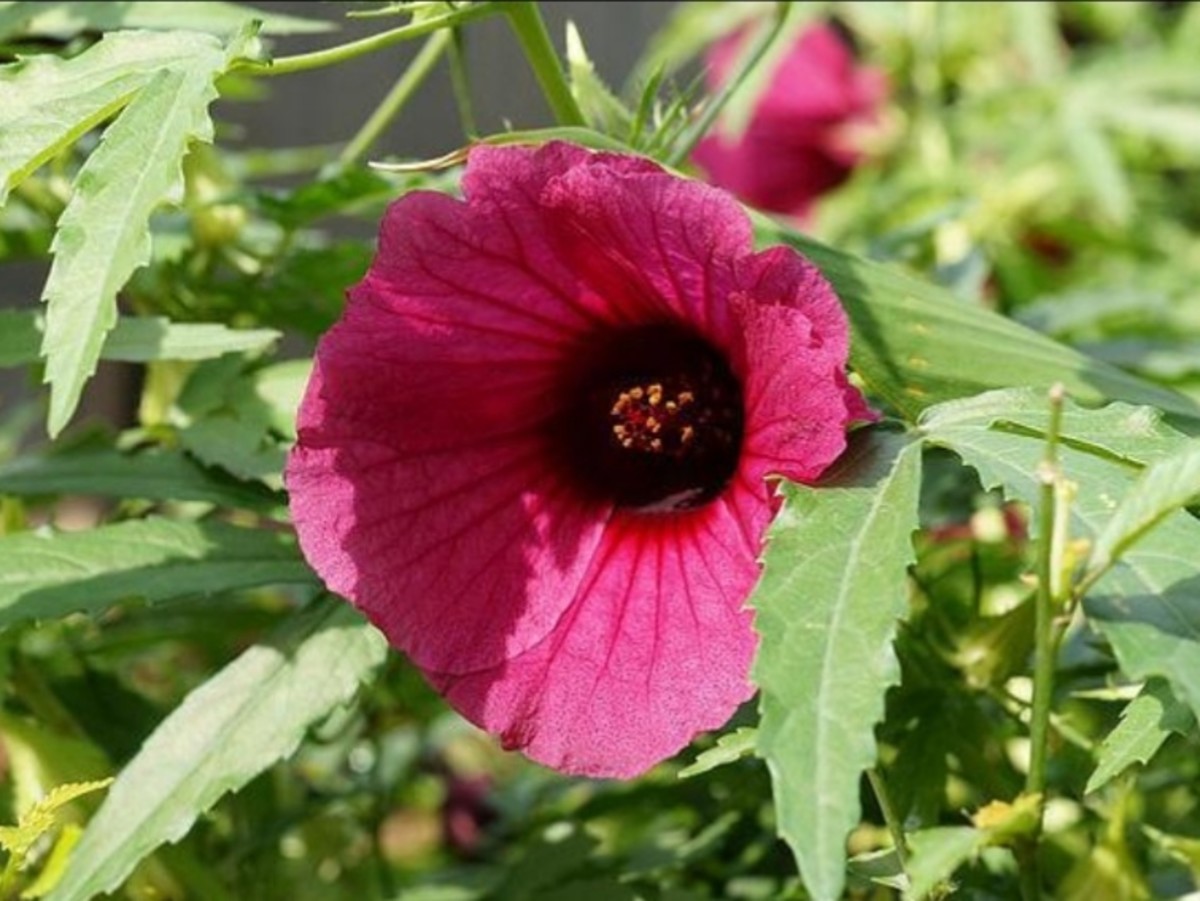The Long and Troubled Voyage of Sugar: from the Idyllic New Guinea to the Sunny Caribbean Islands


Sugarcane, a crop long known to man
The origins of the use of sugar by humans go back as far as 8000 BC, as it is believed that were the people from the island of New Guinea, North of Australia, who first domesticated sugarcane. There is still no general agreement on the number of sugarcane species; it varies from 6 to 37 depending on the source. All sugarcane species of the genus Saccharum interbreed and the major cultivars are in fact complex hybrids referred to as Saccharum spp.; thus they are very different from the original wild species that were firs domesticated and cultivated in Southeast Asia. Saccharum sp. belong to same family as wheat, maize, rice, sorghum, bamboo and many forage crops, Poaceae, or Gramineae, the true grasses; considered by many the most economically important family of plant species.
Sugarcane, like all typical grasses, has rhizomes or stolons from which lateral shoots develop forming multiple long stems that can reach up to 6 m high and 5 cm in diameter, with long dark green leaves and the typical inflorescence common to all Poaceae, the ear. But unlike other grasses, sugarcane stems are not hollow and serve as the main water and nutrient storage organ of the plant, comprisesing about 75% of the whole mature plant. Wild ancestors of modern sugarcane were not as rich in sugar, sucrose, as the common cultivars of today. The high content in sucrose was artificially created by human selection during the domestication process and later improved with the advances in the agricultural technology. It is hard to point to one single species of genus Saccharum as the ancestor of sugarcane, as all species come from the same region. Most probably, the domestication involved the use of many natural hybrids that were being selected by different populations and thus crossed and propagated according to their sugar content. Today, sugarcane is the world’s largest crop, according to FAO, being cultivated in almost 100 countries and occupying a total area similar to Great Britain. Sugarcane accounts for 80% of all sugar produced in the world, with 1/3 of that being in produced in Brazil.
New Guinea, where the domestication of sugarcane took place
How sugar conquered the world
Initially, sugarcane was only grown to chew and to squeeze its sweet juice. It started first in the Indonesian archipelago and soon spread to Indochina, South China, and the Indian Subcontinent. In the 200 BC sugar was already used in China and a little later sugarcane was introduced to Greek and Roman people. The first known sugar refining processes happened in India, from when the first records of solid sugar, crystals, are known, possibly in the fourth century. Persians were then responsible for its cultivation and refining in the Middle East. Muslims traders later took care of expanding sugarcane cultivation and sugar refining in the Mediterranean basin around the seventh century at the peak of their expansion. In the tenth century sugarcane was being cultivated in Egypt and later in Sicily. In the twelfth century sugarcane reaches the Algarve and the Andalusia, south of Spain, and in 1425 is introduced in Madeira Island by the Portuguese prince Henry the Navigator, followed by the Azores, Cape Verde and Santiago Island and later in São Tomé and Príncipe Islands. After obtaining the Canary Islands, Spaniards also introduced sugarcane there in the fifteenth century. However, It was only on his second voyage, in 1493, that Christopher Columbus introduced sugarcane into the American continent, by bringing cane seedlings into Hispaniola Island. Throughout the Middle Ages sugar was considered a fine spice, thus of high value. That status was only changed from the sixteenth century onwards when the technological advances and the New World fuel-sources turned sugar into a bulk commodity.

Brazil emerges as the leading producer
Since it was "discovered" and throughout the first decades, Brazil was not very attractive to the eyes of the Portuguese or targeted as of big economic interest. It seemed to offer little more than the highly prized brazilwood, mainly used for making dyes for the textile industry. Native people themselves, being semi-nomadic, did not produce any kind of wealth, and had very limited agricultural knowledge that was of women’s responsibility mainly. It took thirty years up to the Portuguese king John III to be truly interested in the colonization of Brazil. The growing decrease of the spice trade in the East as well as the reducing profits of sugar in Madeira and the attempts made by Spaniards and French to install some entrepôts on the Brazilian coast contributed greatly to the rise in interest of the Portuguese ruler. The first attempts to grow sugarcane in Brazil were made at the beginning of the sixteenth century. But it was only after 1540 that the real industrialization of sugar began to such a scale that would quickly become the pillar of the Brazilian economy until the end of seventeenth century.
Due to these advances, after the sixteenth century sugar is no longer used exclusively for medicinal purposes and begins to be consumed as a sweetener. However, until the late nineteenth century it was still considered a rare luxury product, and therefore due to its high price, sugar was only available for the wealthy. Sugar was undoubtedly the main crop grown in Brazil, a colony characterized by monoculture. That success would not have been possible without the success that Portuguese had achieved earlier in the Atlantic islands, including Madeira and São Tomé, which functioned as true laboratories for what it became the European colonization of the New World. Also very important was the fact that the whole process, from cultivation, refining, and distribution of sugar was exclusively under national responsibility. This happened for the first time in the history of the Portuguese colonial empire, and embraced all sectors of society at that time.


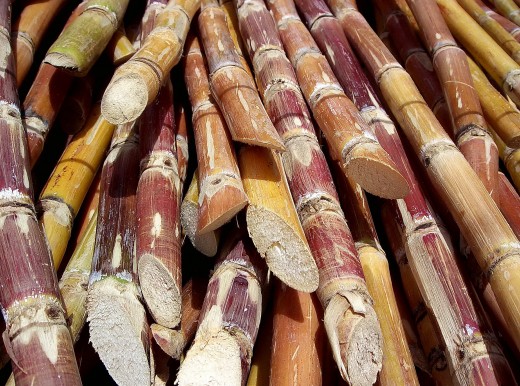
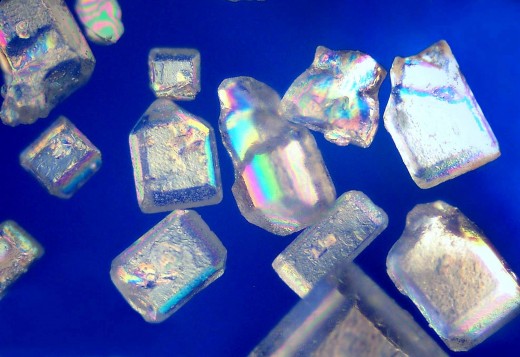
Sugar Production in Brazilian and Portuguese Engenhos
The engenho, the Portuguese term for cane sugar mill, was the real sugar factory, a set of agricultural and industrial facilities made for the cultivation of sugarcane and manufacturing of sugar, usually built into large rural estates. Set firstly in Madeira Island, the engenhos later thrived in Brazil with the expansion of sugarcane culture. Usually, the word engenho referred only to the mill but it was later extended to the whole industrial property including the people who worked and lived there. In Brazil, the first records of such facilities date back to 1533, in the Captaincy of São Vicente, now the state of São Paulo, in Southern Brazil. The type of the mill varied depending on the source of power used, i.e. hydraulic or animal traction.
The mills powered by water, known as Engenhos Reais (Royal Engenhos), were usually larger and more productive, producing between 30,000 and 100,000 kilograms of sugar per year whereas they were small, medium or large. The engenhos powered by animals (usually cattle) were called the trapiches, and those a bit smaller were called engenhocas (little engenhos) or molinotes. Each of these animal-powered mills needed fifteen up to twenty yoke of oxen to move the wheels of the mill. Thus, it is of no surprise that breeding cattle was also a big part of Brazilian economy associated to sugar. The premises of an engenho were varied in type and dimension. However, all engenhos had: a mill house where sugarcane was pressed to get the syrup (there it was the central machinery of the whole process); the boiler house, where the furnaces were located and the syrup was boiled and thickened; and the house of purging, where the syrup or molasses, was put out to dry and to bleach. Sugar was then packed in properly identified boxes, and shipped to Portugal then to be sent for refining (usually in the Netherlands) – its final state before being sold and consumed. This structure of engenhos varied between different regions but it was similar in organization in Brazil, Cuba, Dominican Republic, and other countries that conforms the Caribbean, where sugar was the main product of export at that time.

Life at the Engenhos
Engenhos were also a place for living and in addition to these industrial premises there was also the house where the owner of the engenho and his family lived and the private chapel for the community religious services. There was also a small school where children learned the first lessons, very basic reading and writing, administered by the catholic church. However, as we all know life in the engenhos was not easy and idyllic for everyone. As it is easy to imagine, and especially at those times, a lot of manpower was required to sow, harvest, and carry sugarcane and to process sugar. That was all supplied by slaves, of African origin mostly at its peak. Thus the presence of slave quarters, the large wooden barracks, the senzala, which rarely had windows, was common to all engenhos. Slaves slept and ate with the minimum of comfort, rarely taking advantage of rest, socializing, singing or praying moments that were always very discreet as to not disturb the owner’s family.
Engenho became the symbol of a complex social structure, self-sufficient and truly expensive to sustain, not only its construction, but especially its maintenance because it had to ensure its good operation and maximum profitability. Thus, in addition to its large extension required for the plantation of sugarcane, the engenhos could only work with a large number of workers, between 50 and 200 men according to the size of the mill - from slaves, free and specialized workers (mostly coming directly from Europe), to the owner and his family, responsible for managing the entire process. Also, together with all facilities and equipment needed, there were many animals and transportation equipment needed. Many engenhos in Brazil were thus located near rivers not only to be provided of water and humidity needed for the crops but also to ensure easy transport of goods, people and equipment.
Some Facts:
- 80% of the sugar production in the world comes from suggarcane.
- Sugarcane is the biggest crop in the world, spread to almost 100 countries.
- Brazil accounts for 1/3 of the total sugar production in the world.
- When introduced to Europe it was considered a fine spice for medicinal use mostly, thus of very limited availability.
- The first records of refined sugar date back to 4th century AD in India.
Maintaining a profitable engenho implied managing many different activities, from production to distribution of sugar, and therefore many workers. The first settlers who were attracted to the Brazilian "promised land" for its easy wealth and money did not go with the intention of getting their hands dirty, by working hard on the field. In fact many were trying to escape from those harsh ways of living in Europe, even though they were of low and medium Portuguese nobility and rarely wealthy people. Thus, one of the first major problems they faced was indeed lack of sufficient manpower. At first the contacts between the Portuguese and native people were generally friendly, since native people were curious and had a friendly character. Those contacts involved the exchange of gifts mainly. But, when the Portuguese began to settle permanently in Brazil, thus increasing their number and introduced production economy, the situation changed dramatically.
Soon the Portuguese realized that the native people would not be sufficient to ensure the work required in the manufacture of sugar in the engenhos. However, in mid-sixteenth century, in Brazil, there would be around 2000 white people for twice as many slaves, and nearly all native Brazilians. From the impression of good, pure and simple native Brazilians where then seen as hopeless savages, without faith or discipline. In reality, native Brazilians proved to be a fragile social group that could not withstand many hours of work or captivity. Many would end ill and even die and there are references to attacks on the engenhos as protest. The Portuguese mistreatment of Brazilian natives to force them to work, gained such proportions that the church, among others, came to openly criticize the situation. However, this did not prevent the drastic decrease of the Brazilian native population.
The Portuguese state, in response to this problem and the constant complaints of the Jesuits, was then forced to regulate the enslavement of native Brazilians by creating specific legislation in the year 1570. One must note that, the Brazilian native population, when the Portuguese first arrived, was indeed very small compared to the extension of its land, as it is the native Amazon population of today. The constant manpower needed and the insufficient ability to get it from native population is the main reason that propelled the beginning of the slave trade between West Africa and the Americas initiated by the Portuguese and the Spaniards. One final and curious note, the word engenho is still common in Madeira Island and Brazilian Toponymy today, as it reflects the beginning of many human settlements in many remote areas.
A Typical and traditional Brazilian sugar mill powered by animal force
Modern Cane Sugar Mill in Paraguay
You might want to have a look at:
- The Pará rubber tree, Hevea brasiliensis: How Brazil Lost Its White Gold
The rise and fall of the Pará rubber tree, the natural source of rubber. The epic journey of rubber that started over 3000 years ago. - The Fabulous Destiny of The Snake Pine
The unusual, old and rare pines that exist along the central Portuguese Atlantic coast. - The Sacrifice of Brazilwood (Caesalpinia echinata): How It Helped to Build an Empire and Giving Birt
The story of the rise and fall of Brazilwood. How it created and shaped the form of a new country. - Plants and Portuguese Discoveries: How Americans Got Addicted to Banana and Indians Spiced Up with M
Many of our most useful, tasteful and favourite food and plants have made a long journey to reach our tables at home. That journey began long ago and some of those plants changed European and Asian societies dramatically. Know more about how and why

